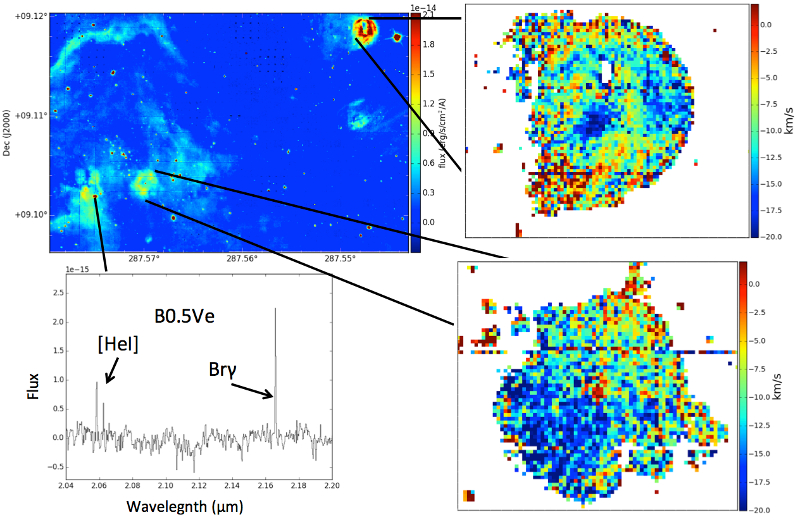| EPoS Contribution |
|
Observing massive star formation feedback: what optical and near-infrared integral field spectroscopy can do for you
Anna McLeod ESO, Garching, DE | |
| Throughout their entire life, massive stars deeply affect their surroundings: via outflows when they first form, via strong stellar winds and powerful ionising radiation later on, and via energetic supernovae explosions when their life ends. These effects can be followed and quantified by simulating their formation and evolution within molecular clouds, but observationally speaking, the quantification of the feedback mechanisms is very difficult. The difficulties can, however, be overcome in the era of integral field spectroscopy (IFS). The results of recent observations of a variety of structures and environments will be shown, carried out with the IFS MUSE and KMOS at the VLT, operating in the optical and near-infrared respectively. In our observational campaign we targeted pillar-like structures, HII regions and massive star forming regions like W49 and W33, detecting photo-evaporative flows, ultra-compact HII regions, expanding bubbles and accretion features (as shown in the figure) . With the unprecedented combination of spatial and spectral resolution of IFS, we were also able to detect and classify the possible massive O-stars responsible for the feedback in these regions. Ultimately, we will discuss how the comparison of several regions can lead to a quantification of massive star formation feedback. | |
 | |
| Caption: KMOS Br gamma integrated intensity map of the massive star forming region W49A (upper left panel), where ongoing feedback can be observed. The upper right panel shows a zoom-in of the corresponding velocity map of a ring-like structure seen in the Br gamma map, at the center of which a massive young stellar object (YSO) is found: the ring-like structure is recovered by the velocity map, and shows a layered shape. The lower right panel is the same as the previous one around another massive YSO, but this time the velocity structure shows a gradient of about 10 km/s in North-East/South-West direction, most probably indicating infall or outflow. The lower left panel shows the extracted near-infrared spectrum of a star, with which a tentative classification of a B0.5Ve star was possible. | |
| Collaborators: L. Testi, ESO, DE G. Beccari, ESO, DE J.E. Dale, USM, DE R. Galvan-Madrid, IRyA, MX A. Ginsburg, ESO, DE M. Gritschneder, USM, DE P. Klaassen, ROE, GB H.-Y. Lu, ESO, DE J. Mottram, MPIA, DE T. Preibisch, USM, DE S. Ramsay, ESO, DE |
Key publication
Suggested Session: Stellar Feedback |

